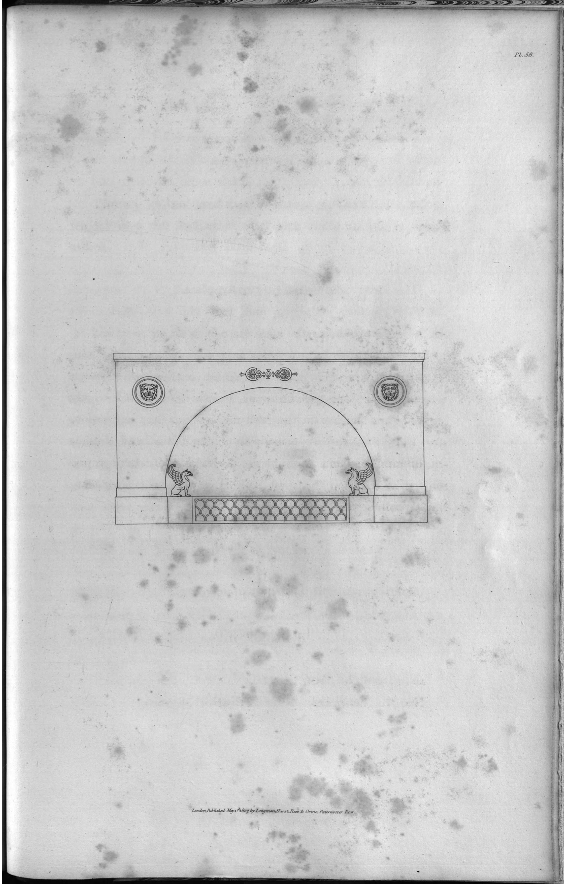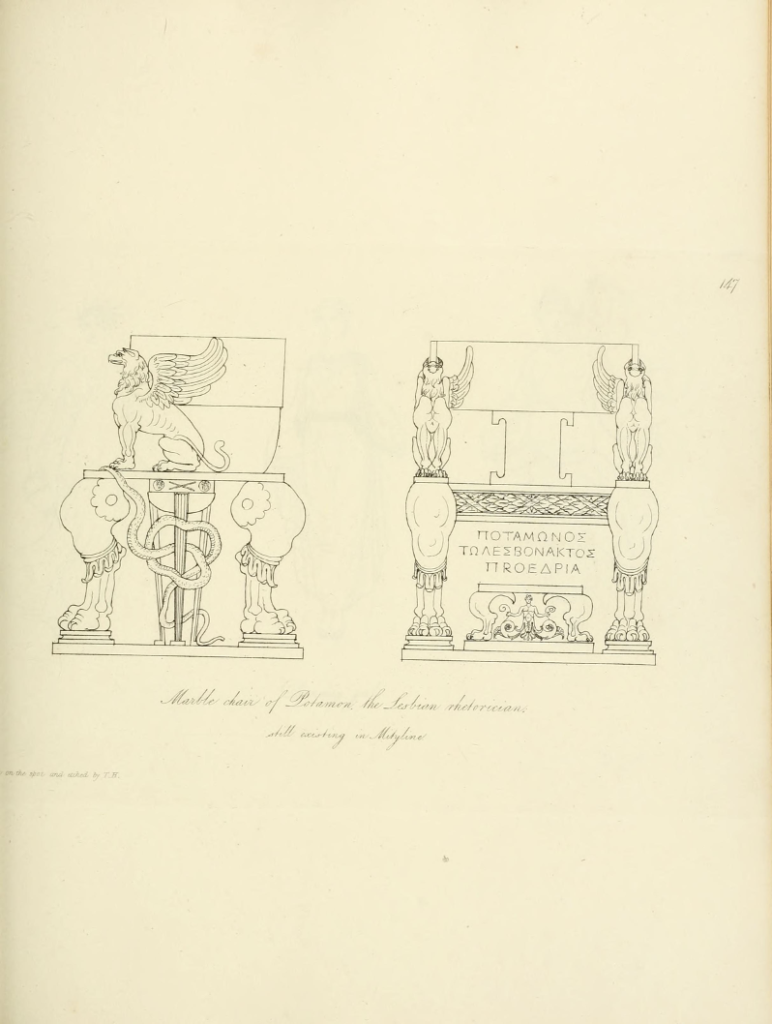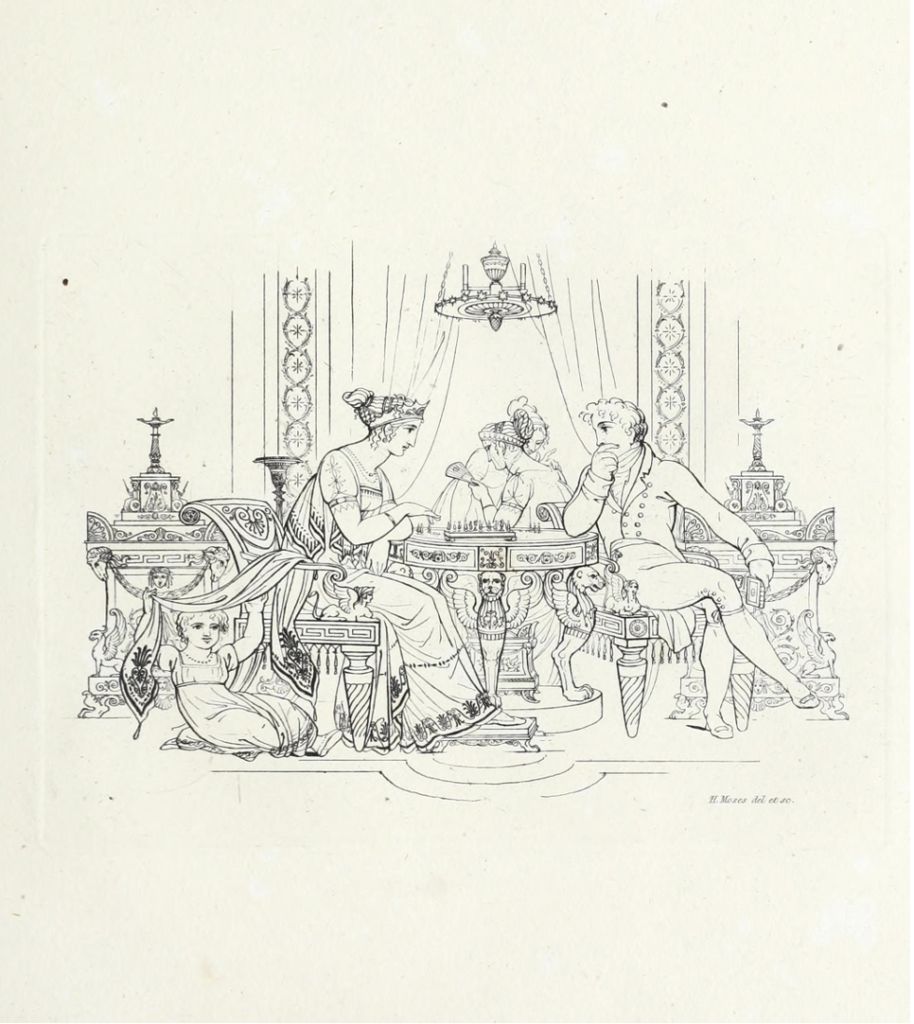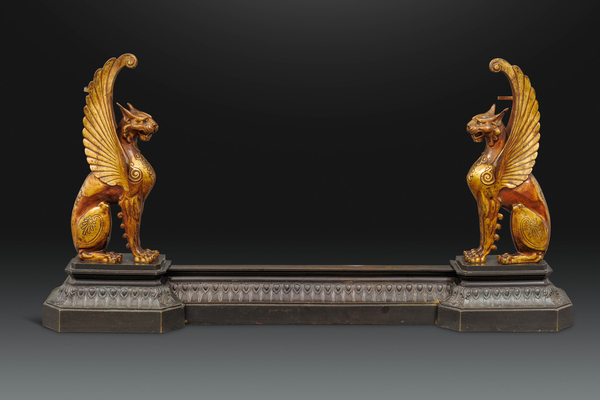Product Description
The present fender is of deceptively plain inverted breakfront form, adorned with egg and dart decoration and two splendid gilded griffins of very large size. The griffins have hooks on the back to support fire tools and are exceptionally well cast, with chased acanthus detailing to the hind quarters, breasts and wing joints. The gilding has aged very well and acquired a lovely patina.
Attributing the source of the initial design to Thomas Hope is relatively simple in this case. When working on these sorts of attributions, it is the policy of most auction houses and dealers to refer purely to Hope’s Household Furniture and Decoration, published in 1807, and indeed there is a relevant plate there. Plate 58 shows a fender with griffin decoration adorning a fine fireplace.
 Household Furniture and Decoration plate 58
Household Furniture and Decoration plate 58
However it is important to look at Hope’s other published works which are much less frequently cited in decorative arts contexts as they give us a much fuller picture of the importance of griffins in Hope’s schemes and the possible source for the model that he chose to utilise in many of his designs.
In his Costume of the Ancients published in 1809, Hope illustrated a chair which he claims to have drawn on the spot and later etched himself. This chair, shown in plate 147 of the work, is said to have been “a marble chair of Potamon, the Lesbian rhetorician” and features particularly striking griffins used as arm supports-in the manner of some of the chairs that Hope himself designed.
 Thomas Hope’s Costume of the Ancients plate 147
Thomas Hope’s Costume of the Ancients plate 147
Perhaps most interesting of all, and largely overlooked by those working on regency furniture and decoration, is Henry Moses’ 1823 publication A Series of Twenty-Nine Designs of Modern Costume. This work, produced in conjunction with Hope, is largely a collection of costume plates but set against the backdrop of the rooms of Hope’s Duchess Street mansion. As a result, we are able to see some of Hope’s furniture in its London context here, something that is missing from his self-published works which showed the interiors of his Deepdene mansion in Surrey instead. We have reproduced one of Moses’ plates below as it shows the sheer importance of the griffin motif to Hope. Aside from the griffin monopedia on the central table in the plate which immediately catch the eye, there are a pair of pedestals which feature very similar griffin motifs to those on our fender.
 A plate from Henry Moses’ A Series of Twenty-Nine Designs of Modern Costume
A plate from Henry Moses’ A Series of Twenty-Nine Designs of Modern Costume
It is also worth noting that griffins were said to pull Apollo the sun god’s chariot and so the use of these creatures on a fender is obviously a clever in-joke that would have been appreciated by those with a classical education at the time.
This very fine fender makes a wonderful decorative statement and relates clearly to the work of the most famous of all of the regency connoisseurs and designers and his work to revive the classical ideals in England. It is also worth noting that it pairs extremely well with our Egyptomania fire grate which also draws inspiration from some of Hope’s designs.
English, 19th century







Reviews
There are no reviews yet.